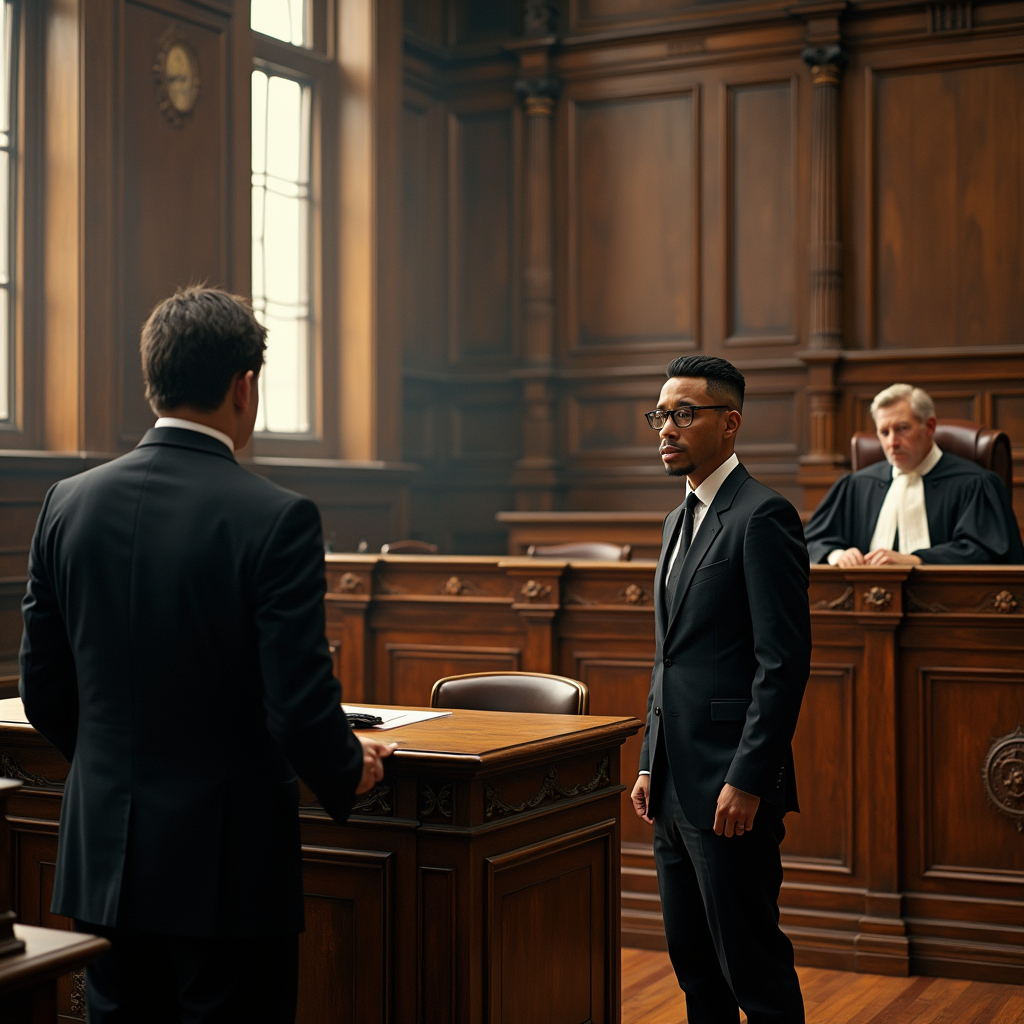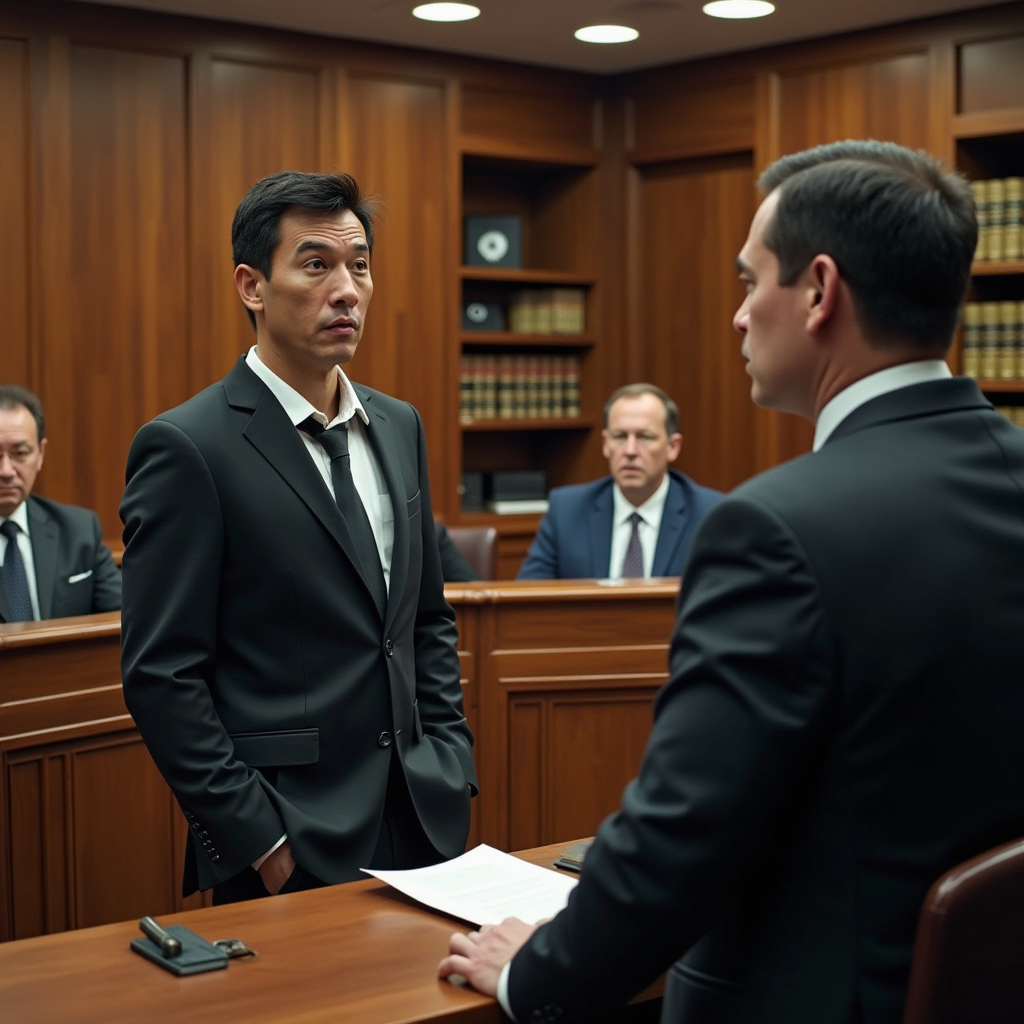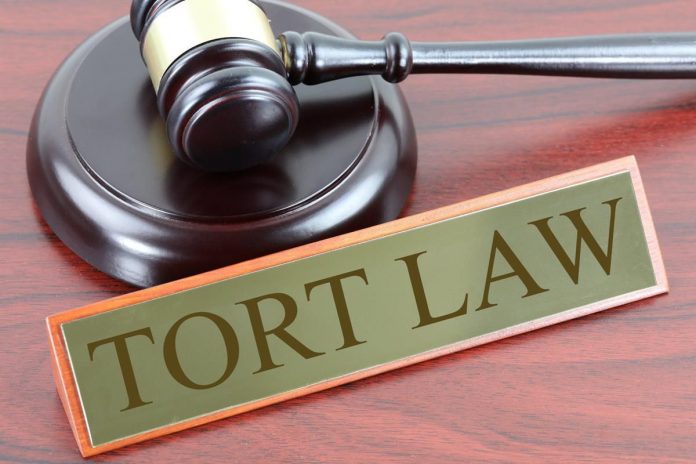This article was written by Shruti Somya and further updated by Pragya Pathak. This article discusses the defence of inevitable accidents under the law of torts in detail, including its meaning, history, examples, landmark judgements and conceptual analysis.
Table of Contents
Introduction
The law of torts has evolved from its existence with time. ‘Tort’ has been defined by Fraser as an infringement of a right in rem of a private individual that results in a right to compensation where a suit arises at the behest of the person injured because of such infringement. Inevitable accident is the defence of the tort law, as it acts as a prevention to defend a person from a tortious action. Some examples of tortious actions are battery, trespass, defamation, and negligence, to name a few.
Inevitable accident is a defence under tort when a negligent act takes place. The acts of negligence result in payment of damages, which is a punishment in torts that are usually in the form of liquidated damages. When an action, that is considered negligent, takes place in an unexpected or inevitable manner, the defence of an inevitable accident comes into the picture. The defences are predominantly counterclaims that are employed by the defendants in a case. These counterclaims are known as ‘general defences in torts’. There are many defences in the law of tort. Some of these are acts of God, nuisance, inevitable accidents, etc. This article deals with the defence of inevitable accidents and the conceptual understanding of the same. It also delves into the meaning, history and important judgments that have shaped the landscape of inevitable accidents under tort law in India and abroad.
Inevitable accident
Meaning
The dictionary meaning of ‘inevitable’ is something that cannot be avoided or evaded. If we look at this combination of words, distinctively, we see that the term ‘inevitable’ refers to a situation that could not be prevented under any circumstances, no matter how stringent and adequate the precautionary measures are. A situation cannot be avoided where it is inevitable, although it was done with proper conduct and exists without any malicious intention.
The term ‘accident’ is an unexpected event that leads to some sort of harm or injury that is unforeseeable or unfathomable. In general, people are expected to be vigilant only for the scenarios that are reasonable. All care and caution are possible to a reasonable limit. Beyond that limit, if the scenarios become unreasonably overarching, then even such care and caution can fail. This is the viewpoint carried by Lord Dunedin in the case of Fardon vs. Harcourt Rivington (1932). In simple terms, the law demands us to be careful in our actions so that others are not harmed by our acts. This care, here, is just a normal precaution. It is not an extreme overstepping.
Let us understand this with an illustration. Suppose, A is travelling to another city carrying firearms on a horse. He should be reasonable enough to be prepared for any casualty related to the firearms. So, the packaging should be done correctly so that it can be delivered safely to its destination. However, if the horse gets upset and starts to run or jump because of some miscreants on the road, there seems to be nothing that A can do in this situation. He can, at best, try to control the horse. Now, during this, if the horse jumps and the cartel of firearms slips from the carriage and is found by a madman who shoots himself, would A be liable?
A did take all care and caution and yet, there was this unexpected incident that led to a chain of events. For all the events in the chain, A cannot be held liable. When the plaintiff will prove negligence, A can easily and successfully take the defence of an inevitable accident.
Inevitable accident as a defence
The very first thought that comes to mind, after listening to the phrase “inevitable accident” is a road accident, as was the case in the above-discussed illustration. But, in law, an inevitable accident is a general defence in the law of tort, and not just an accident. The inevitable accident, which is also known as unavoidable accident, says that a person cannot be held liable for an accident which was not foreseeable despite all care and caution taken from his side. The law states that a high degree of precaution is not required and reasonable care is sufficient.

To understand the concept of an inevitable accident, let us look at other relatable examples. If A was driving a car and he was in his senses and took all due care but suddenly, due to mechanical part failure, his car loses balance and hits a passer-by. In this case, the driver would not be liable as he took all precautions from his side. Here, it is pertinent to note that such accidents were unavoidable even after precautions were taken.
The instances of act of god can also be sometimes classified into inevitable accidents. It can be understood from another example. If A was driving a car with all the reasonable care from his part and, suddenly, due to heavy rain and storm, the road collapsed and A’s car hit many pedestrians. In this case also, the driver would not be liable since the situation was completely out of his hand. Thus, It is to be seen by the court of law, while adjudicating such a case, what kind of inevitable situation is being talked about. To ensure that justice is being served, it is necessary to make a careful observation as to whether there was really no scope of care by the defendant. Also, it is equally important to see whether the case of negligence has really been made in a situation or is it only an imposition by the plaintiffs.
Sir Frederick Pollock has defined an inevitable accident as, “not avoidable by any such precautions as a reasonable man, doing such an act then could be expected to take.” It is always a part of the litigations involving personal injury, where the harm is caused without any fault of the parties involved. This defence of inevitable accident is used by a person where one party establishes that there has been a case of prima facie negligence and, thereafter, the defendant is endowed with the onus to prove an inevitable accident, the manner in which an accident took place and how that accident was inevitable. It has to be inclusive of the details that are proving the claims of the defendant, like how there was a loss of control of the vehicle and how, despite any proper care and precaution, the particular accident was impossible to be avoided.
This is a defence used by a defendant when the doctrine of inevitable accident is enforced in case of lack of malicious intent on the part of the defendant when negligence is claimed by the plaintiff in a case.
Historical evolution of inevitable accident
The beginning of inevitable accidents as a defence under the law of tort came up in situations involving trespass. Trespass has been defined by the Black’s Law Dictionary as “an unlawful act that harms the person or property of another person, but more specially, where a person is entering the physical personal property of a person”. It is an intentional tort, which means that this tort can only be committed when a person has the intention. This is where the defence of an inevitable accident helped those who, in fact, did not have an intention of committing the tort of trespass and yet ended up committing it. This defence became even more important because at that time, a tort of trespass was actionable irrespective of whether the person committing such an act had an intention to commit it or not.
For example, if A finds his goat to be missing and looks for it, and finds it in the property of B, A may go inside the land to get the goat. In this case, B can claim trespass and hold A accountable, even though A did not have the intention of trespassing. The courts of law decided to give leeway to the defendants in such a case. The defendants had to essentially prove that it was an inevitable or unavoidable occurrence. It was a matter where the defendant had the onus of proving the absence of fault.
The above was an old rule regarding the applicability of this defence. At present, this onus has been shifted from the shoulders of the defendant. This is because now, it has become the requirement of the plaintiff to prove the presence of negligence on the part of the defendant. This is opposed to the defendant proving the presence of negligence, in the past.

Relationship between inevitable accident and negligence
To understand the defence or doctrine of an inevitable accident, we also need to understand the relationship between negligence and an inevitable accident. According to Winfield, “Negligence is a breach of a legal duty to care in the form of a tort and which results in damages to the plaintiff that are not desired by the defendant”. In case of negligence, therefore, a defendant has a legal duty of care that gets breached and, due to this breach on the part of the defendant, the plaintiff suffers damages. The determination of whether the defendant had such a duty is decided by the court of law on the basis of the facts and circumstances of each case.
While the burden of proving that the accident was inevitable lies on the defendant, the burden of proof to show that the act of negligence has been committed by the defendant lies on the plaintiff. An inevitable accident is, thus, a consequence of the claim of negligence. In simple terms, negligence claimed by any plaintiff has a few exceptions which can be exercised by the defendants to be absolved of the alleged negligence. These exceptions are actually the defences that can be taken by the defendant, which are contributory negligence, an act of god (vis major) and an inevitable accident.
For the defendant to use the defence of an inevitable accident, it is necessary to show two things. Firstly, there should be no intention on the part of the defendant to positively supplement the accident and, secondly, the collision could not have been avoided with reasonable care. The defendant can clearly deny any responsibility but it is more difficult to satisfy the authorities. The most prominent defence used by the defendant is that there was an unanticipated blackout just before the crash. In that case, the defendant has to prove that there was a sudden medical illness. The examples given under inevitable accidents here revolve mostly around road accidents because this defence is mostly taken by the defendants in case of road accidents.
However, we can take another example that pertains to a different scenario. Ishan, a defendant, loved gardening and kept pots beside the terrace railing and surrounded the same with a net to prevent the pots from falling down from the second floor where he lived. One day, one of the pots fell from the terrace because the net was bitten by a rat, resulting in a hole that was not visible to the eye. This pot fell on a dog who got enraged and bit a neighbour of Ishan, Mr. Kishan, who happened to be passing by the dog. Mr. Kishan sued Ishan citing that Ishan had been negligent in his conduct but Ishan can validly take the defence of an inevitable accident because all the essentials of this doctrine are being satisfied in this case. These essentials have been further discussed for a better understanding.
Relationship between inevitable accident and act of God
Inevitable accidents and acts of God are defences under law of torts. They are similar in the sense that they protect the defendant from any legal liability arising out of a tort committed by him/her. Another point of similarity is that they also result in damage or injury to the plaintiff for which, however, tortious liability cannot be put on such tortfeasors for causing such damage. However, they are conceptually very distinct from each other.
Inevitable accidents arise from legitimate actions where due precaution is taken, yet it results in damage. It is important that there was proper care undertaken, otherwise it becomes a negligent act for which there is no defence from imposing liability. In the case of an act of God, there is no means by which an action could become negligence. This is because the action that causes damage, in the case of the act of God, is simply beyond any humane power. The earthquakes, floods, landslides, etc., are some situations that naturally arise and one human being or a group cannot be made responsible for the damage caused because of such natural disasters.

Essentials of inevitable accidents
When a defendant is using the doctrine of an inevitable accident, there are some essentials that need to be taken care of for the successful application of this doctrine. It can be categorised into three parts. Let us delve into the same, below–
- Firstly, there has to be an accident i.e., an unavoidable incident;
- Secondly, it should be unfathomable and unavoidable even if a person has used all the possible skills, care and caution;
- Thirdly, as a consequence of this, there should have been suffering, damage, injury, hurt, or harm to a person but which has not been caused by another person who has properly exercised all caution and has not been negligent.
Types of inevitable accidents
In general terminology, inevitable accidents can be categorised into two types, which are mentioned below–
- Accidents that are caused due to the intervention of forces beyond human power; and
- Accidents that are partially or totally caused due to any act committed by a human being.
Exceptions to the defence of inevitable accident
There are certain special situations where a defendant is incapable of using the defence of an inevitable accident. These instances are the exceptions or can be referred to as limitations to this defence which are discussed as under:
Trespass
The defence of an inevitable accident is not applicable in case of a situation of trespass. Trespass is where an unauthorised person enters into the property of another person. The defence is inapplicable to ensure that the defendant does not bear the burden of proof but the plaintiff does.
Strict liability
The principle of strict liability is where a person has a serious burden of liability in the strictest sense and no derogation is possible by claiming carelessness, etc. Any situation that causes serious harm to others cannot be averted by any reasonable care and caution hence, an inevitable accident is not an available defence in these situations.
Foreign landmark judgements on inevitable accidents
George Brown vs. George K. Kendall (1850)
In this case, both the plaintiff and defendant owned dogs. One day, their dogs started fighting and, to separate them, Kendall started smacking a stick. Even though Brown was conveniently distant from the site of the dogs’ fight, he approached Kendall’s back when the dogs began approaching him. Kendall, being unaware of his advance, raised the stick and hurt Brown. Brown got severely hurt and brought a motion of violence and assault against Kendall. Kendall pleaded the defence of an inevitable accident before the court of law.
In this case, the Supreme Judicial Court of Massachusetts gave a judgement that was inclined towards Kendall, who took the defence of an inevitable accident. It disregarded the claim of negligence made by the plaintiff and favoured the defendant.
Holms vs. Mather (1875)
In the landmark case of Holms vs. Mather (1875) L.R. 10 Ex. 261, a man, the plaintiff in this case, was walking on the road. The defendant’s servant was driving a carriage with the horses on the same public road. Because of the barking of a dog on the road, the horses got startled and became unmanageable. During this, the mud was splashed across the plaintiff’s dress and eyes which injured her. The plaintiff made the claim of negligence on the part of the defendant but the court ruled against the plaintiff.
It reasoned that this accident was inevitable in nature and the defendant could not possibly know the consequences of a situation that is not foreseeable. In the general parlance, the court observed that we should be ready for such small encounters of mischief. This is so because reasonable care on the part of others is not always sufficient to prevent such occurrences.
Stanley vs. Powell (1891)

In the landmark case, the plaintiff and the defendant were a part of the shooting party that was involved in the activity of shooting pheasants. The defendant aimed and shot to kill a pheasant but the shot missed and injured the plaintiff’s eye by bouncing from a tree. The plaintiff claimed negligence on the part of the defendant. However, the Queen’s Bench Division ruled that the accident could not have been averted by the defendant even by exercising any type of precaution. It was held that there was no negligence on the part of the defendant and that there was no absence of reasonable care and precaution on the part of the defendant.
National Coal Board vs. JE Evans & Co. (Cardiff) Ltd. (1951)
In this case, the tort of trespass was an issue. An electric cable was laid down by the plaintiff’s predecessors on the county council’s land. The county council was not aware of the same and, when the county council employed a few workers to excavate the land, this electric cable got damaged. The plaintiffs filed a suit. The defendants in this case pleaded for an inevitable accident. They claimed that they had absolutely no way to find out about the cable. The court held that the defence of the inevitable accident was correctly pleaded and favoured the defendants in the decision.
Chow-Hidasi vs. Hidasi (2011)

In this case, the plaintiff is the wife and the defendant is the husband. Both husband and wife were travelling along a mountain road. The defendant was well aware of the slippery road; so, he took all the precautions. He was travelling below 100 kmph, but somehow the car lost its balance. The defendant pulled the emergency brakes which could not stop the car and the car hit the near barrier, injuring the plaintiff.
The plaintiff sued the husband stating that he was rashly driving and did not take the precautionary measures. The defendant took the pleading of an inevitable accident. The court accepted the defence stating that the car lost control because of the mechanical failure which was totally out of the scope of the defendant.
In this case, the Supreme Court of British Columbia decided in the favour of the defendant and stated that it was not a situation of negligence but an inevitable accident and, thus, dismissed the action made by the plaintiff. Therefore, the defence of an inevitable accident was accepted by the court.
Efstathios Ch. Constantinides Ltd., Kentriki Insurance Ltd. vs. Andrea Papayianni (2015)
In the case of Efstathios Ch. Constantinides Ltd, Kentriki Insurance Ltd v. Andrea Papayianni, Case No. 1249/08, (2015), the defendant was driving a car on the road and, suddenly, he had a cardiac arrest. Due to this sudden arrest, he hit a passer-by and on-looker. The matter went to the court and the defendant pleaded the defence of an inevitable accident. To support his side, he even presented the court with his medical history of cardiac arrest. But the District Court of Limassol gave the rule against the defendant. The Hon’ble judge stated that the defendant could not prove that the arrest was sudden at the time of the accident which was a necessary element for the plea of inevitable accident.
Secondly, the defendant was well known for his health condition of cardiac arrest. He should have not taken the risk of driving. Therefore, the accident was not unforeseeable and could have been avoided. By driving with his serious illness, therefore, it is unfathomable when a cardiac arrest would occur resulting in an accident. He ruled, thus, that he should be held liable for the accident.
Indian landmark judgements on inevitable accidents
Padmavati & Ors. vs. Dugganaika & Ors. (1975)
In this case, there was a jeep that gave a lift to two strangers. After they got into the jeep, unfortunately, the right tyre of the front side got detached because the bolt connected to the axle gave way. Both the strangers got serious injuries, and one of them succumbed to those injuries. The defendants claimed that it was an inevitable accident. Also, they got into the jeep voluntarily, which attracts the principle of ‘voluntary non-fit injuria’. The High Court of Karnataka noted that this kind of technical defect cannot be foreseen with the help of regular checks of the vehicle. Therefore, the defendants were not found liable by the court.
S. Vedantacharya and Anr. vs. Highways Department of South Arcot and Anr. (1986)
In the present case, a bus fell into a stream because the trough it was passing from, collapsed and a passenger died because of the same. The Highway Department made the argument that this was an unavoidable event which was not foreseeable as the trough was found to be in an upright condition a day before by the engineers and, also, it had been raining for two weeks.
The Madras High Court had accepted the defence of an inevitable accident but the Apex Court reversed the judgement and held that the Highway Department would be liable for this negligence as there were no precautionary measures to ensure safety in such events by strengthening the trough against any weather-oriented problems. It was decided by the Supreme Court of India in the favour of the plaintiffs observing that even though an inevitable event has taken place, the liability still lies with the defendant because of lack of exercise of precaution.
Shridhar Tiwari vs. Uttar Pradesh State Road Transport Corporation (1987)

In this case, there was a bus ‘X’, belonging to the defendant, that had to apply brakes to prevent a cyclist that suddenly appearing before the driver of the bus, ‘X’. It was also a rainy day which is why the roads were also wet. At the time when brakes were applied by the driver of the bus ‘X’, there was another bus in the picture, ‘Y’, coming from the opposite direction. The rear part of the bus ‘X’ hit the front part of the bus ‘Y’ in the process of applying brakes. It was found that this accident was the only result of the sudden appearance of the cyclist. Otherwise, the buses were driven at moderate speeds; hence, there was no carelessness. The High Court of Allahabad decided that the defendant corporation is not liable as this was a case of inevitable accident.
A. Krishna Patra vs. Orissa State Electricity Board & Ors. (1998)
In this case, a couple was walking on the streets of Orissa when the wife met with a dangerous accident by coming into contact with a live conductor lying on the road, naked. She was rushed to the hospital where she died. The petitioner, her husband, claimed compensation of Rs. 1,00,000 from the Orissa State Electricity Board stating that the mishap was exclusively due to negligence on the part of the Electricity Board. Proper care and caution were not taken, hence, the board should be held liable for the compensation.
The Electricity Board argued that the incident was an inevitable accident. The incident was out of their control. Soon after, an electrical inspector was appointed to examine the status of the conductor and the reason for its fall. Surprisingly, the electrical inspector showed a different picture of the case. The live conductor had outlived its age. It has already been more than 30 years and was very weak. The reason for the fall was its ageing and has become mechanically unsound, therefore, dangerously fatal if it comes into contact with any living being. The police investigation report also stated that the death of the woman was due to electrification.
After analysing the facts, it was concluded that the incident was not an inevitable accident. A mandatory due care was not taken in this situation. The electricity board has not examined the conductor from time to time. This accident could have been avoided by regular inspection of the conductors and the wires. We can see that all the elements necessary to prove negligence are present. The Electricity Board should be held liable for the death of women. But the Electricity Board pleaded the defence of an inevitable accident which was rejected by the court and compensation was awarded for Rs. 50,000 to the defendant.
Assam State Co-operative Marketing & Consumers’ Federation Ltd. vs. Anubha Saha & Ors. (2001)
In the case of Assam State Co-operative Marketing and Consumers’ Federation Limited Vs. Anubha Saha and Ors. AIR 2001 Gau 18, the plaintiff is the landlord and the defendant is the tenant of the landlord. The defendant requested the landlord to repair the electrical wiring of the premises that was rented out. It was brought to the notice of the plaintiff that the wiring was defective and needed repair, but the plaintiff did not get the repairs done. Eventually, there was an accidental fire in the premises. The plaintiff filed a suit to claim compensation for the damage to the premises, from the tenant. The court decided that there was no negligence on the part of the defendant. The court observed that this was a clear case of an inevitable accident, hence, the defendant will not be liable to pay compensation to the plaintiff.
National Insurance Co. Ltd. vs. Swaran Singh & Ors. (2004)
In this case, there was an accident that took place from a vehicle insured by the insurance company and the people injured through this vehicle demanded compensation from the insurance company. It was argued that this was not a foreseeable event and, thus, there is no liability on the shoulders of the company. The Apex Court of India held the company liable and made a distinction between an accident and an inevitable accident. It highlighted that it will not be accepted that liability is tried to be avoided by any party on technical grounds like unclear policy conditions. It also stated that negligence and accident can co-exist and this was a case of accident, not an inevitable accident. If the court accepted the arguments made by the insurance company, all accidents would become inevitable accidents and all liability would be prevented which is correctly levied.

Conclusion
Inevitable is not only a helpful defence for the drivers where a road accident has occurred but also in many other cases where the claim of negligence is made and an accident occurs which is beyond the control of a person. Negligence means an absence of any type of care and caution. In an inevitable accident, a person exercises all the care but, still, it is not possible to prevent such an occurrence because it is out of the hands of the defendant.
There is a major difference in different types of defences that can be taken in case a claim of negligence comes up in a court. There is also a visible clarity on how this defence can be pleaded in a court of law. The defendant only has to prove that there could not have been any alteration in his act to avoid the incident and the total incident was not intentional. However, if the defendant can not prove his act and the court finds that the act could have been avoided then the defence will not be available. The courts have been lenient and inclusive about this defence and have ensured that on the basis of natural law as well, this defence is not denied without looking at the basis of the claim.
The judgements show that the jurisprudence observed by the courts in most of the landmark judgements on inevitable accidents, primarily focuses on not letting the defendant bear the burden of commission of a wrongful action, which was out of the control of that person.
This defence of inevitable accident has elevated and enhanced the concept of negligence and has also prevented any wrongful decisions showing that it is not always the case that an accident occurred so it must be the fault of the doer of the act.
Frequently Asked Questions (FAQs)
What do you mean by inevitable accident defence/doctrine?
The doctrine of inevitable accident is a defence that protects the defendant against the claim of negligence made by the plaintiff. If the defendant could not have prevented an accidental situation from taking place despite using all the possible care, caution and skill, then it is practically impossible to prevent the injury, harm or damage caused by such an accident. It is one of the three defences available to any person in the shoes of a defendant in a case, which are, contributory negligence, act of god and inevitable accident.
What is the difference between an inevitable accident and contributory negligence?
Negligence, which results in damage to a person, takes place when a person does not exercise the duty of care that he or she is bound to exercise. A defendant being alleged of negligence can protect himself/herself by claiming the defences of inevitable accident and contributory negligence, depending upon the situation.
The defence of contributory negligence comes into the picture, when the defendant is only partially responsible for the harm caused to the plaintiff and the plaintiff has also been irresponsible, contributing to the negligence that took place. In case of an inevitable accident, as we already discussed in the article, there has to be an accidental and inevitable situation that resulted in a damage or injury to a person, even after taking all due care. The said inevitable accident shall be that one which was impossible to prevent such an event, even though all the possible care and precautions were exercised by the tortfeasor.
What is the difference between an inevitable accident and the act of God?
Both of them are defences that are aimed at preventing any tortious liability to the defendant. In the case of the act of god or force majeure, the situation causing harm to a person is directly caused due to an act of God, which means something that happened beyond any human intervention or control. Examples of the ‘act of god’ or vis major are earthquakes, floods, landslides, etc. An inevitable accident is an unavoidable situation that takes place, despite all the care and precaution taken by the defendant. It is different from vis major on the point that the doer or alleged tortfeasor is the person himself/herself whose acts were impossible to be prevented from happening.
Which law covers inevitable accidents that defend a person for the commission of this tort?
Inevitable accidents are covered under the common law of torts. India has taken up the common law approach in respect of inevitable accidents as opposed to the civil law approach. This is the reason why India also acknowledges the law of torts. The British followed common law and also helped in the codification of the Indian Penal Code, 1860, which punished all the torts. However, torts are also majorly governed by the judicial precedents related to different torts, to understand the course of action in such cases.
References
- https://pdfs.semanticscholar.org/aa16/2330c4a71f1cc6f73a104f9cdadd5b247447.pdf
- https://www.jstor.org/stable/44026942?seq=1
- Ratanlal and Dhirajlal, The Law of Torts, 27th Edition
- https://definitions.uslegal.com/i/inevitable-accident-doctrine/
- https://www.preszlerlawbc.com/car-accident/what-is-an-inevitable-accident/
- http://student.manupatra.com/Academic/Abk/Law-of-Torts/chapter13.htm
- https://www.jstor.org/stable/44026942
- https://www.theopusway.com/law-of-torts-in-india/#:~:text=In%20India%2C%20the%20law%20of%20torts%20is%20codified%20in%20the,common%20law%2C%20with%20some%20modifications
- https://www.mondaq.com/cyprus/rail-road-cycling/442684/the-defence-of-inevitable-accident-in-the-context-of-road-accidents
Students of Lawsikho courses regularly produce writing assignments and work on practical exercises as a part of their coursework and develop themselves in real-life practical skills.
LawSikho has created a telegram group for exchanging legal knowledge, referrals, and various opportunities. You can click on this link and join:
Follow us on Instagram and subscribe to our YouTube channel for more amazing legal content.
 Serato DJ Crack 2025Serato DJ PRO Crack
Serato DJ Crack 2025Serato DJ PRO Crack










 Allow notifications
Allow notifications



